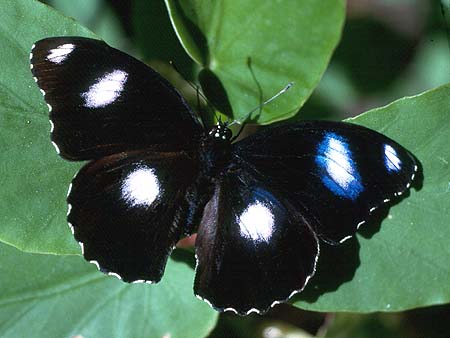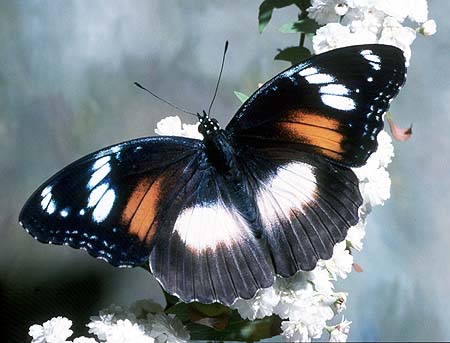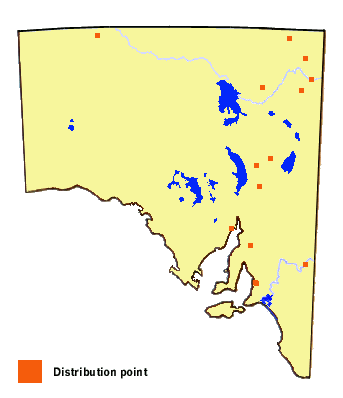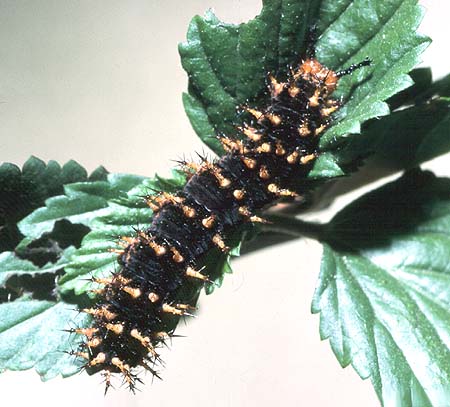Common Eggfly
Hypolimnas bolina nerina (Fabricius)


Interesting Aspects
A large butterfly, wide ranging from Australia through to Southeast Asia, China to India, and even on the Island of Madagascar. It is a highly variable species in its international range, occurring as a number of subspecies and forms, and even in size. The females are particularly prone to polymorphism and at least six main colour forms are recognized in Australia, and there are further intergradations between those forms. Some of these forms mimic the poisonous Euploea and Danaus butterflies. Only the typical form (photos shown on the left) has been recognised in South Australia.
When not in a migratory mood, the butterflies are usually seen flying near their hostplants.


